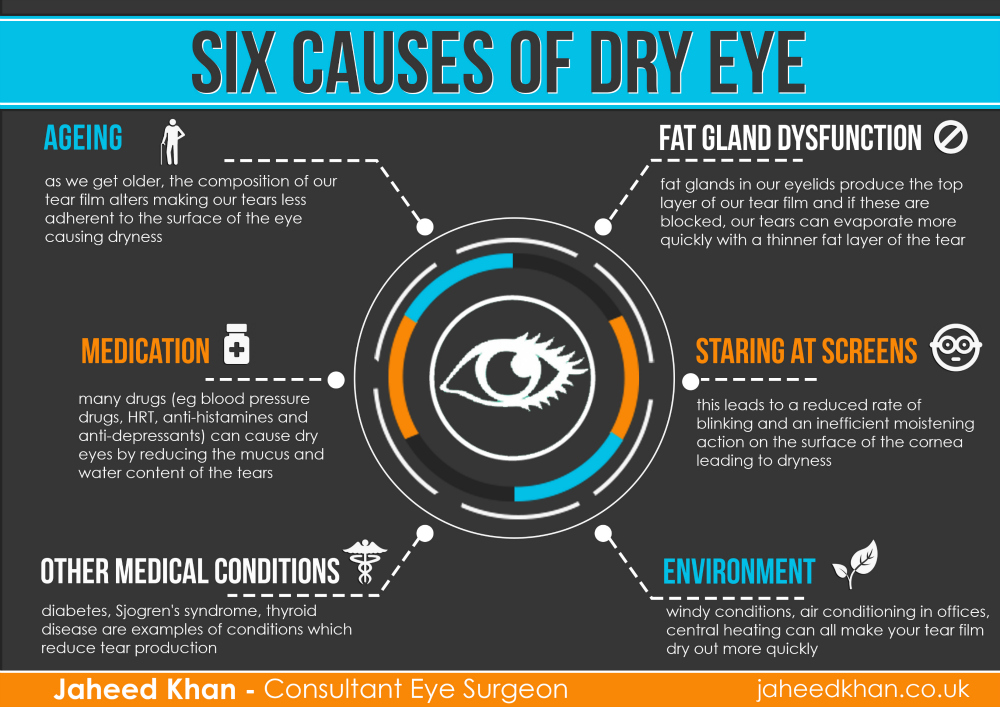Six Causes of Dry Eye
Dry Eye Syndrome, or simply “dry eye”, is a common cause of eye irritation. It occurs when tear glands can’t produce enough tears or produce poor quality tears. Dry eyes can be uncomfortable, causing itching and burning. It may also affect a person’s vision.
Dry Eyes often make it harder to perform daily activities, for example, using a computer or reading over a longer period.
The infographic below shows the six most common causes of dry eye:



![Five Facts about Toric Intra-ocular Lenses [Infographic]](https://jaheedkhan.co.uk/wp-content/uploads/2016/12/jk-toric-lenses-500x383.jpg)
![Contact lens infection – Seven ways to avoid one [Infographic]](https://jaheedkhan.co.uk/wp-content/uploads/2016/12/JK-contact-lens-infections-500x383.jpg)
